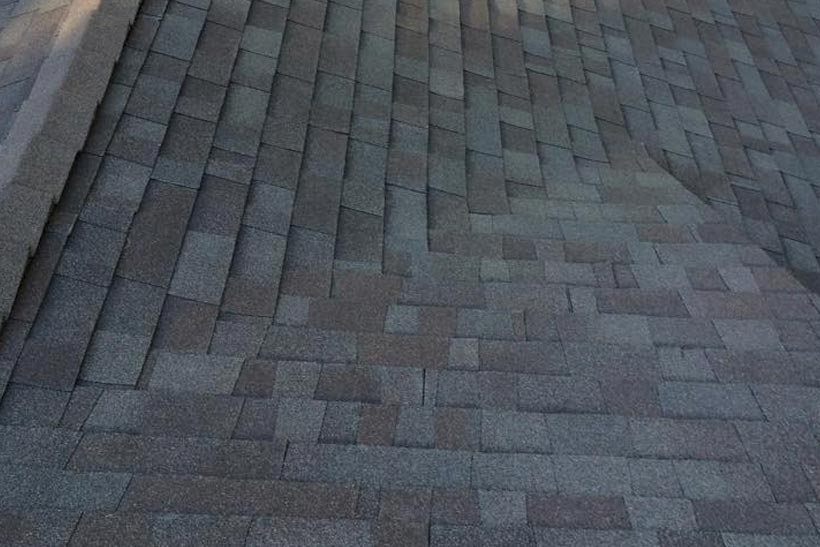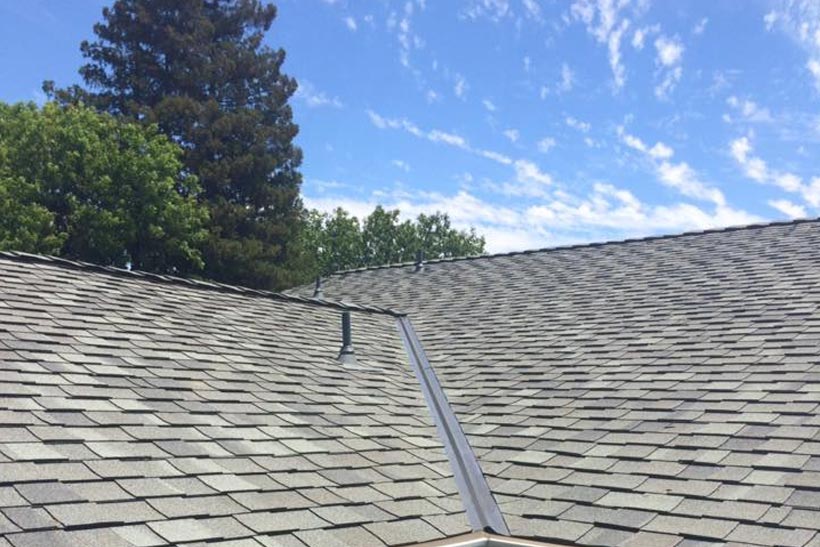The roof valley is the dip where two roof planes meet. There are a handful of ways to install shingles on a roof valley. Each creates a different look and may have different performance benefits. When it comes to your roof, which valley style should you choose? We’ll explain your options, which valleys we typically recommend for our California customers and why.
Our Preference: Open Valleys
Open valleys have an extra layer of flashing beneath the shingles. Further, your roofer will leave that flashing exposed with a small gap in the shingles at the very center of the valley. The flashing looks like a small stripe all of the way down the valley. This gap in the shingles is what makes them open valleys.
The valleys see the most water flow, as water from both surfaces gathers in the valley as it runs down. The extra layer of flashing in the valley helps protect it from water intrusion. Metal flashing, which is most often used, also helps the water move more quickly off the roof, and even the occasional snow. Of course, it’s also water impermeable, for superior performance. These benefits are particularly helpful for low pitched roofs where water tends to collect for longer.
Types of Closed Roof Valleys
 Open valley roofs aren’t your only option. There are several styles of closed roof valleys, that have the extra layer of flashing covered by shingles in some pattern. Closed roof valleys generally perform worse than open valleys on most roofs. Therefore, we rarely do them. In fact, there are some styles of closed valleys we won’t install at all.
Open valley roofs aren’t your only option. There are several styles of closed roof valleys, that have the extra layer of flashing covered by shingles in some pattern. Closed roof valleys generally perform worse than open valleys on most roofs. Therefore, we rarely do them. In fact, there are some styles of closed valleys we won’t install at all.
Woven Valleys
Woven valleys are beautiful. Instead of cutting the shingles or leaving a gap in the valley, we take the shingles from the two roof planes and weave them together. The result is a consistent, beautiful roof face that glides from one side of the valley to the next. Getting this weave smooth and flat is a challenge for some roofers, but at Kelly Roofing we can accomplish it.
The real problem with woven valleys is that the shingles in the center of the valley slow down the water as it runs down. This means there’s more opportunity for water intrusion, or leaks. Also, the shingles in the valley will wear down faster than the shingles on the rest of the roof. This isn’t as much of a problem on high slope roofs, especially in our climate where roofs don’t deal with as much water as they do in cooler, wetter places. So, we will install woven valleys where the conditions are right.
Closed Cut Valleys
One type of roof valley we never install is a closed cut valley. For this style of valley, your roofer installs shingles on one side of the roof over into the valley. Instead of weaving in the second side, they cut those shingles along the center of the valley. This is a lot of additional work, but doesn’t provide performance benefits. In fact, the cut edge of shingles tends to lift up and allow for leaks. Some roofers will spend time cementing the flap down, but it’s not an ideal solution.
Woven and open valleys are both a superior choice, for different reasons. But which is best for your specific roof? Reach out to us to discuss your options. We also provide roofing services in Turlock, Manteca, Livermore and beyond.


